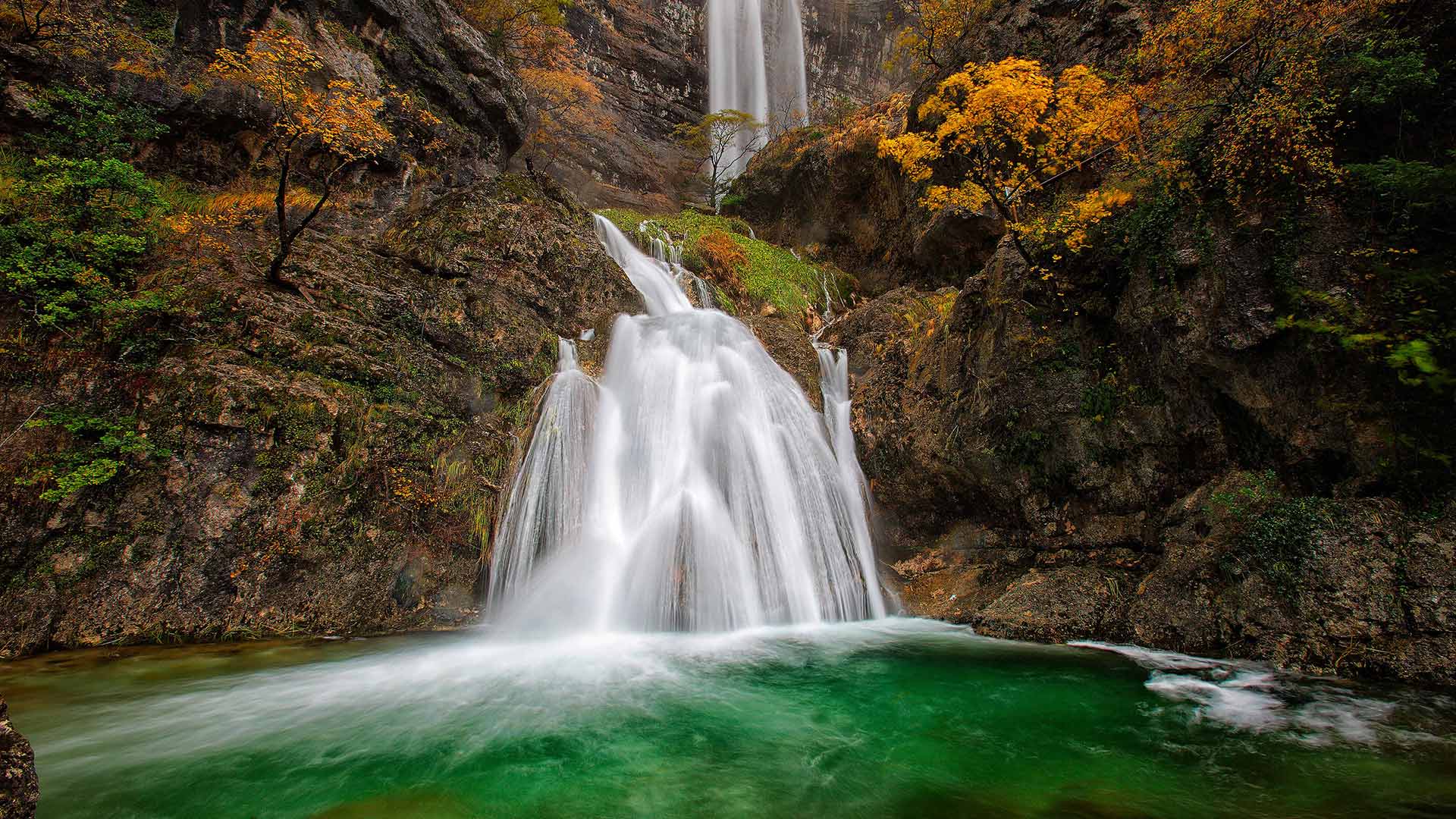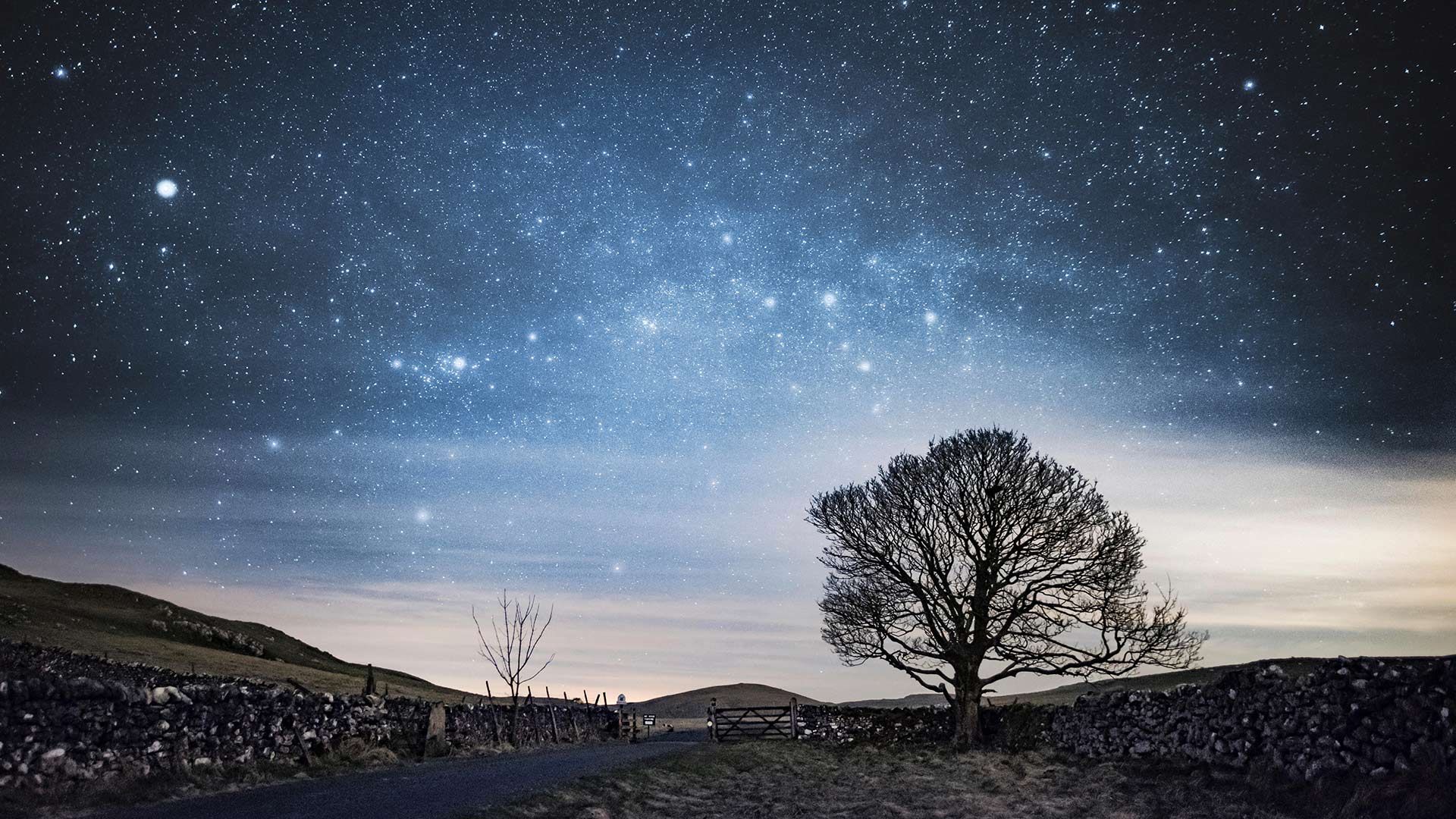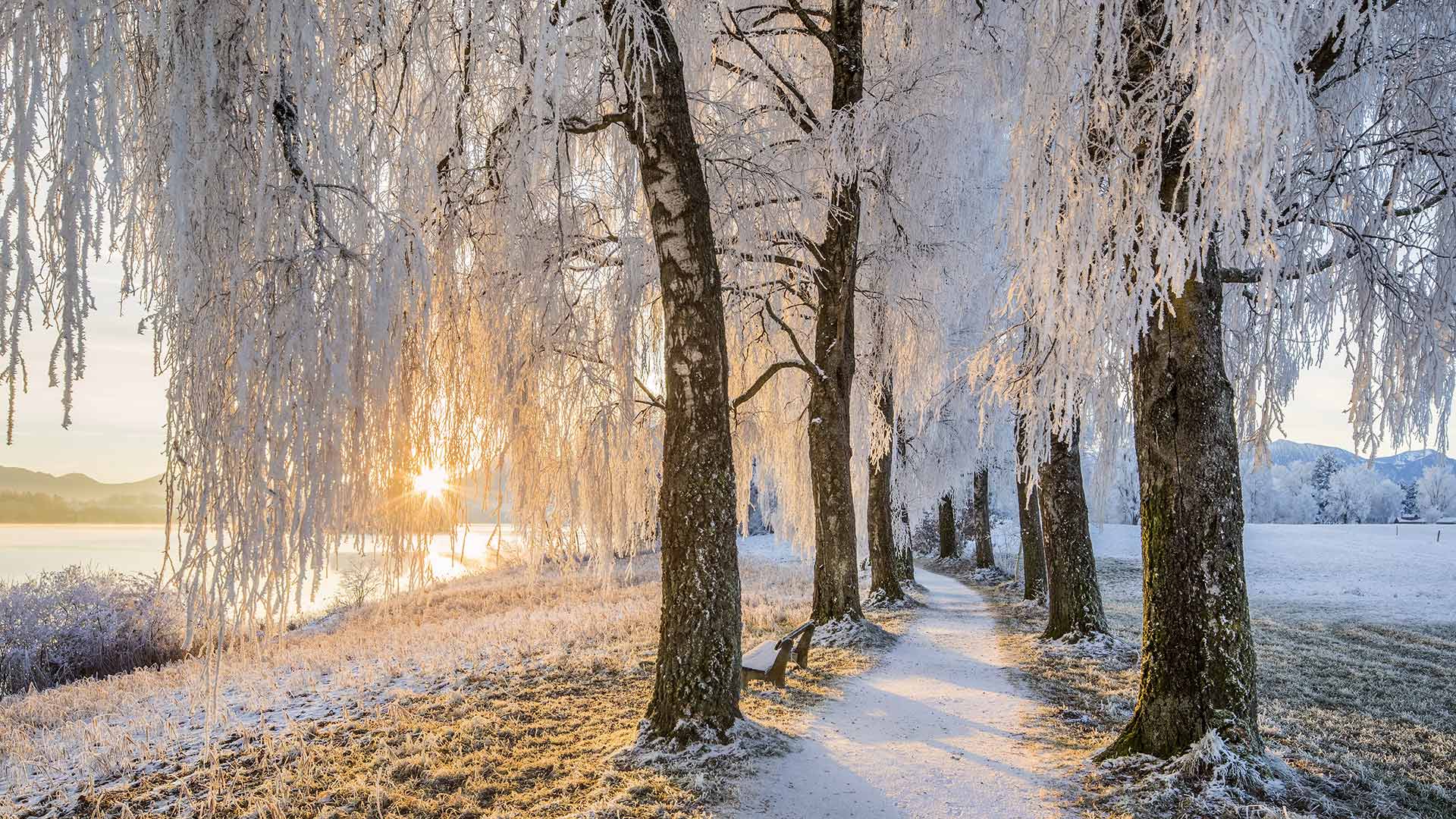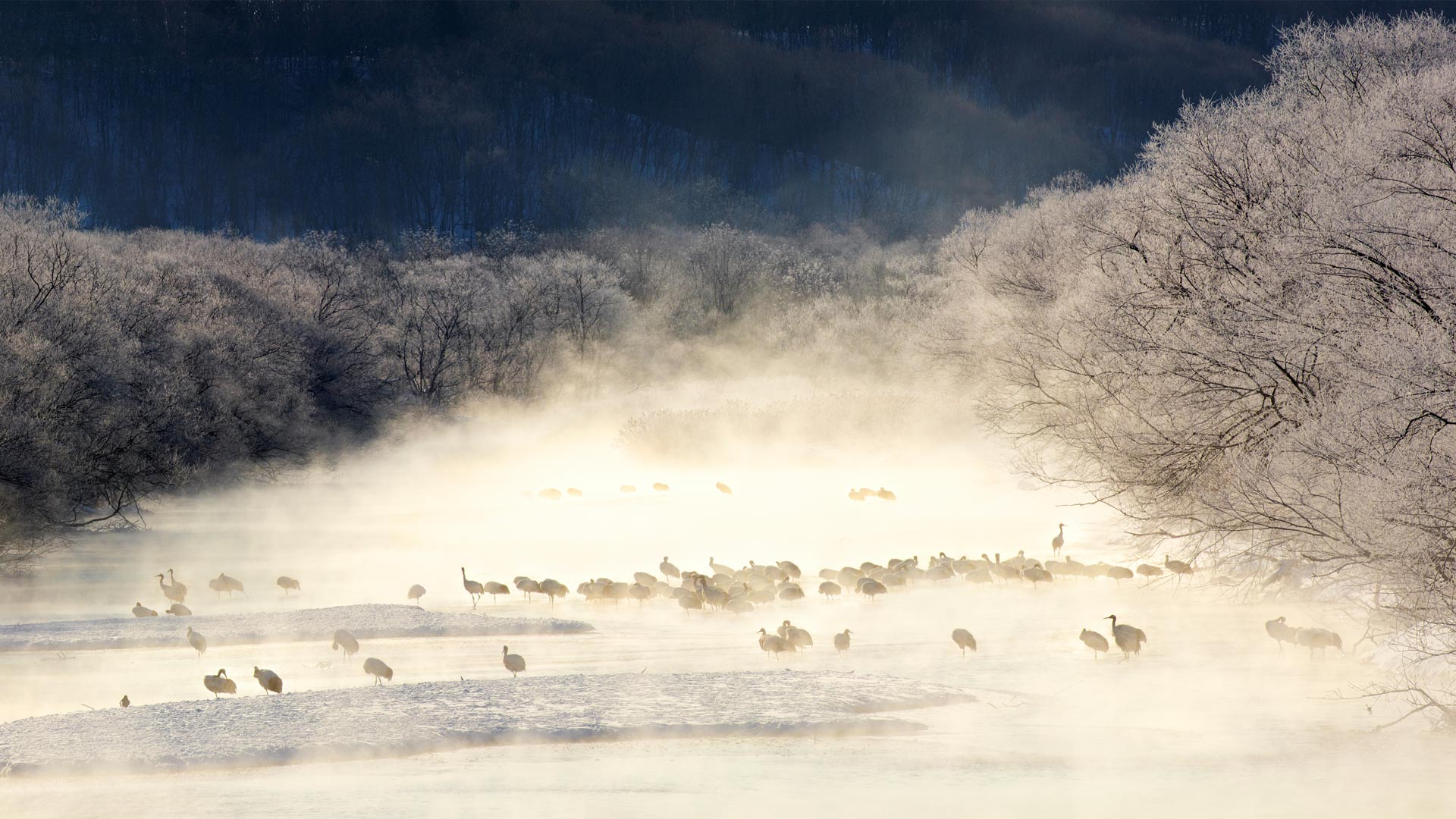蒙多河源头的瀑布,西班牙阿尔瓦赛特里奥帕尔 (© Westend61/Getty Images)
朝圣者将风马旗扔向甘登寺上方的空中为新年祈福,中国西藏 Pilgrims throwing wind horses into the air above Ganden Monastery for the New Year in Tibet, China (© Ian Cumming/plainpicture)

朝圣者将风马旗扔向甘登寺上方的空中为新年祈福,中国西藏 Pilgrims throwing wind horses into the air above Ganden Monastery for the New Year in Tibet, China (© Ian Cumming/plainpicture)
Wind horses carry wishes for a new year
For the first day of Losar, or the Tibetan New Year, we're paying a visit to these Buddhist pilgrims at the Ganden Monastery in Lhasa, Tibet. Losar is celebrated for 15 days, but most events occur in the first three days. They include wishing family members a prosperous year, praying at monasteries or temples, exchanging gifts, burning incense, chanting, wrestling, horse racing, and more. Celebrations for the new year end with Chotrul Duchen, or the Butter Lamp Festival. The pilgrims in today's image are releasing prayer flags called 'wind horses' or lungtas, a ritual they perform during Losar and during the rest of the year as well. Upon releasing the prayer flags, the pilgrims ask the mountain deity to 'increase their fortune like the galloping of a horse and expand their prosperity like the boiling over of milk.'
人们在布雷纳德的加尔湖上冰钓,明尼苏达州 People ice fishing on Gull Lake in Brainerd, Minnesota (© Robert Benson/Cavan)

人们在布雷纳德的加尔湖上冰钓,明尼苏达州 People ice fishing on Gull Lake in Brainerd, Minnesota (© Robert Benson/Cavan)
An icy extravaganza
We’re just outside of Brainerd, Minnesota, for the Ice Fishing Extravaganza on Gull Lake. Each year in late January, more than 10,000 people will come out to catch as many fish as they can—mostly walleye and northern pike, but all fish species are eligible. The contest is organized and run by volunteers exclusively, and 100 percent of the proceeds—around $150,000—goes to local charities.
The practice of ice fishing started years ago when Native American tribes in the Upper Midwest would use it to gather food for the long, harsh winters. But today, ice fishing is a popular winter activity in the Land of 10,000 Lakes. Some anglers even trick out modern-day ice shanties with big-screen TVs, underwater cameras, sonar fish-finders, and bathrooms with hot showers, making it easy to spend entire weekends out on the lake, warm and dry.
The interior of the Great Temple of Ramesses II, Abu Simbel, Egypt (© Nick Brundle Photography/Getty Images)

The interior of the Great Temple of Ramesses II, Abu Simbel, Egypt (© Nick Brundle Photography/Getty Images)
It's not always sunny in Abu Simbel…
This tiny lakeside settlement's Great Temple of Ramesses II was positioned on the orders of that powerful pharaoh so the inner sanctum (in this picture, that's the small room at the very back) is lit by the sun only twice a year. On February 22 and October 22 (thought to be Ramesses' coronation and birth dates, respectively), the first light of dawn illuminates the sanctuary and three statues within: one of Ramesses, one of the sun god Ra, and one of the chief god Amun. A fourth statue depicting the underworld figure Ptah is permanently shrouded in shadow.
The temple is one of a pair resting on the man-made Lake Nasser's shores, the other honoring the pharaoh's wife Nefertari. When the Nile was dammed to create the lake in the 1960s, the whole complex was painstakingly moved to higher ground. While it's unclear if the relocation slightly altered the original timing of the Great Temple's solar alignment, tourists still descend in droves on the site every six months to witness the luminous event.
马勒姆的夜空,英国北约克郡 (© Stephen Dinsdale/Alamy Stock Photo)
施塔弗尔湖畔乌芬附近的桦树大道,德国巴伐利亚 (© Reinhard Schmid/eStock Photo)
以佩尔莫山为背景云层之上的Rifugio Lagazuoi,意大利多洛米蒂山脉 Rifugio Lagazuoi above the clouds with Monte Pelmo in the background, Dolomites, Italy (© Nicolo Miana/eStock Photo)
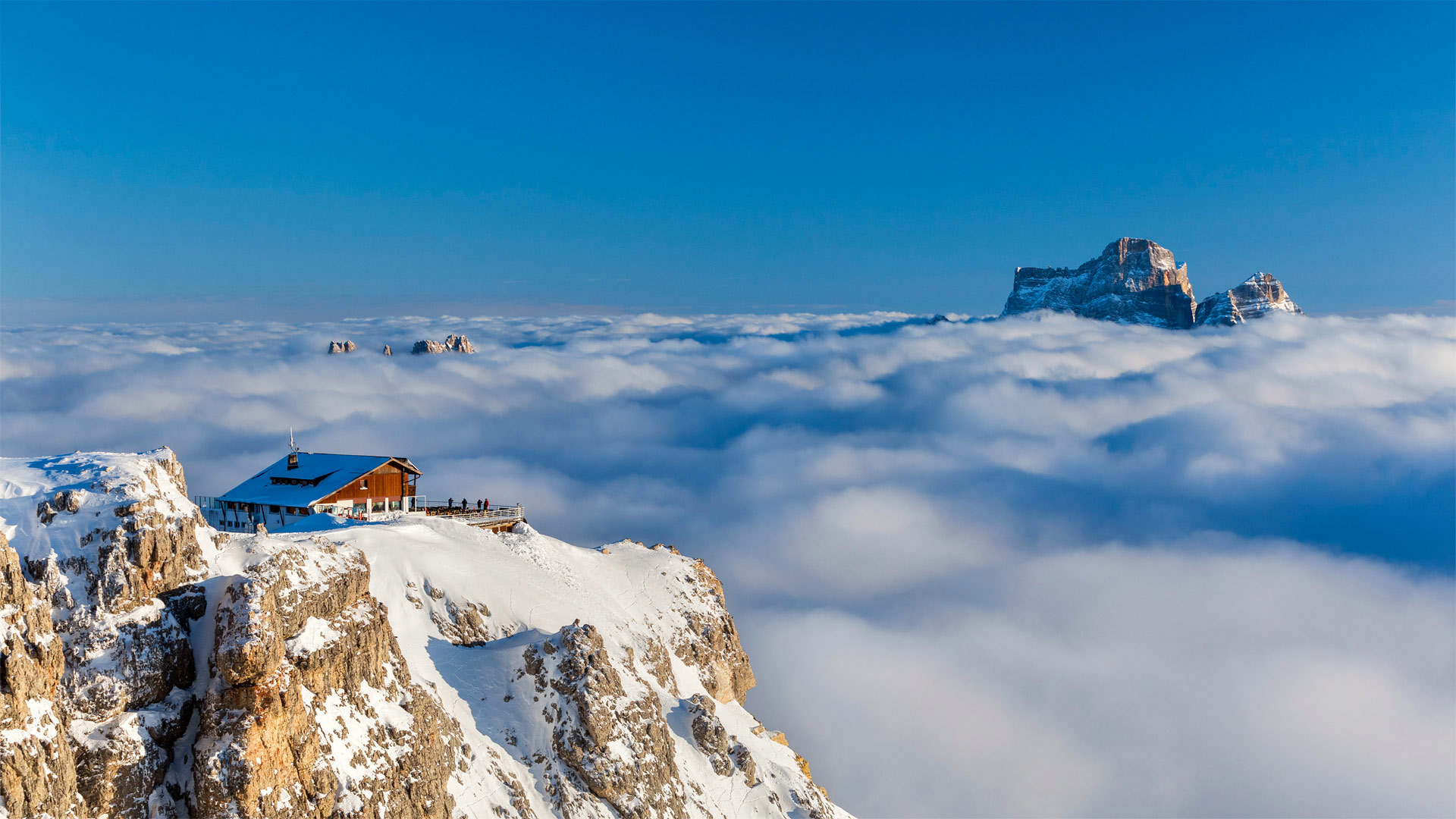
以佩尔莫山为背景云层之上的Rifugio Lagazuoi,意大利多洛米蒂山脉 Rifugio Lagazuoi above the clouds with Monte Pelmo in the background, Dolomites, Italy (© Nicolo Miana/eStock Photo)
Après-ski in the Dolomites
Today's homepage image features Rifugio Lagazuoi, a ski lodge located at about 9,000 feet above sea level on Italy's Mount Lagazuoi. With an elevation higher than most ski lodges in this area of the Dolomites, it gives visitors opportunities for breathtaking views like this one. The ruggedly beautiful mountain landscapes, pristine natural environments, and distinctive geologic formations all contributed to the Dolomites being recognized as an UNESCO World Heritage site in 2009. While the area is accessible all year long, it's worth visiting during the ski season to check out the Great War Ski Tour, an open-air museum and where you can see World War I trenches and tunnels created by Italian and Austro-Hungarian troops as they fought each other in this precipitous and stunning terrain.
美国宇航局新视野星际探测器拍摄的冥王星新月 Pluto's crescent imaged by NASA's New Horizons interplanetary space probe (© NASA/JHUAPL/SWRI/Science Photo Library)

美国宇航局新视野星际探测器拍摄的冥王星新月 Pluto's crescent imaged by NASA's New Horizons interplanetary space probe (© NASA/JHUAPL/SWRI/Science Photo Library)
Too awesome to be a planet
Pluto was first spotted on this day in 1930 by Clyde Tombaugh, a 23-year-old astronomer at Lowell Observatory in Flagstaff, Arizona. Because it’s so far away—about 40 times as far from the sun as Earth is—scientists knew relatively little about Pluto until the New Horizons spacecraft reached it in 2015. In a flyby study, the craft spent more than five months gathering detailed information about Pluto and its moons. What did they find out? There’s a heart-shaped glacier, blue skies, spinning moons, mountains as high as the Rockies, and it snows—but the snow is red.
Once thought to be one of nine full-fledged planets orbiting our sun, in 2006, Pluto was stripped of its planetary status and reclassified as merely a 'dwarf planet.' (Sorry, Pluto.) Though it may no longer be considered a true planet, it’s still the largest dwarf planet of our solar system and holds plenty of mysteries waiting to be discovered.
薄雾笼罩的河流中的丹顶鹤,日本北海道 (© Paul & Paveena Mckenzie/Getty Images)
克瓦尔岛海岸以鲱鱼为食的座头鲸,北挪威特罗姆瑟 Humpback whale feeding on herring off the coast of Kvaløya, Troms, Northern Norway (© Espen Bergersen/Minden Pictures)
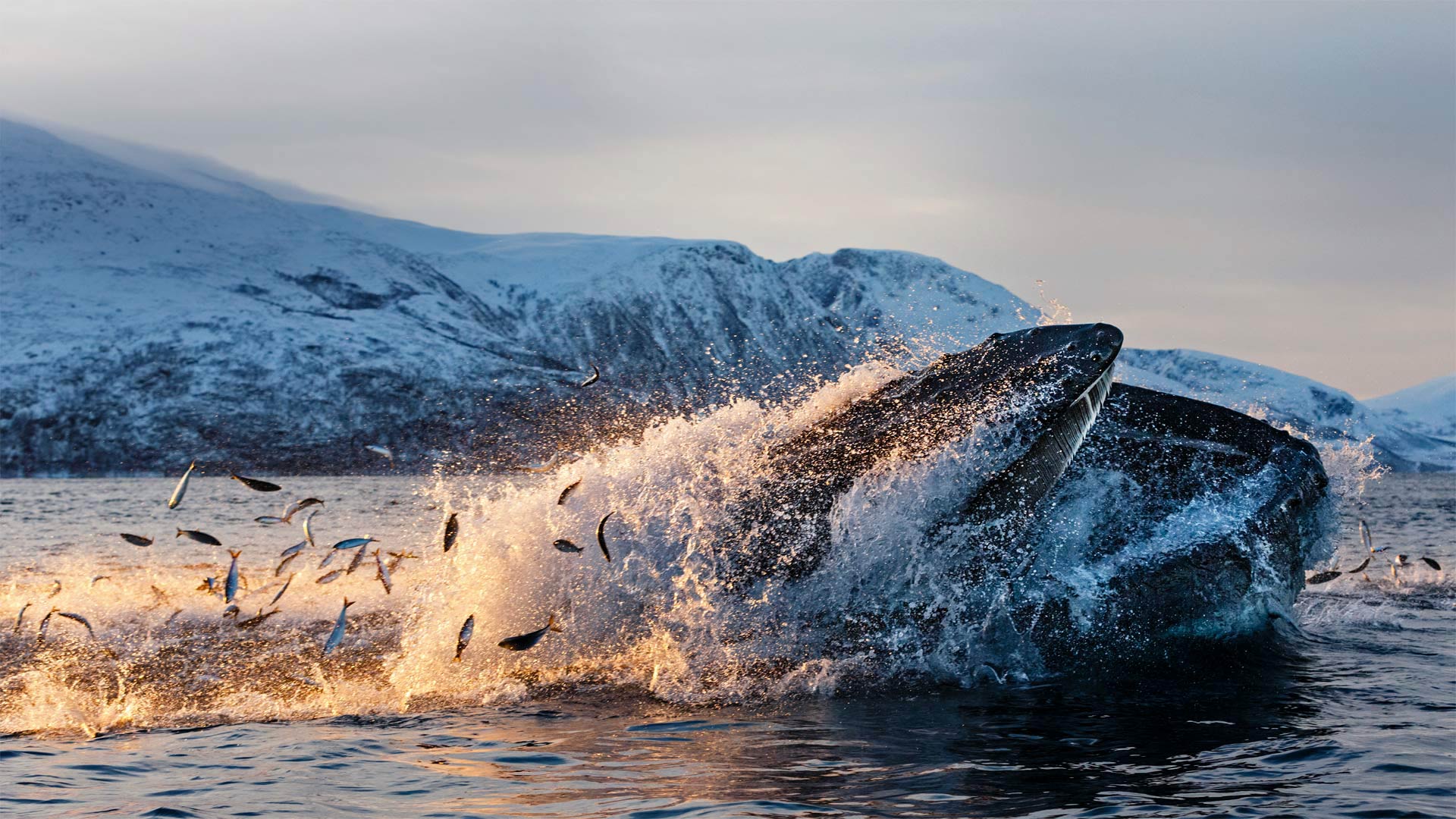
克瓦尔岛海岸以鲱鱼为食的座头鲸,北挪威特罗姆瑟 Humpback whale feeding on herring off the coast of Kvaløya, Troms, Northern Norway (© Espen Bergersen/Minden Pictures)
Whales in winter
Wintertime brings large numbers of humpback whales to the icy waters off the Norwegian coast, where they feed on herring and krill—and delight whale watchers with powerful leaps, tail-slaps, and glimpses into their underwater world. Male humpbacks are famous for theirhaunting songs, which can last up to 20 minutes and be heard over great distances underwater. Scientists aren’t sure why exactly the males sing these ballads, but some theorize it’s related to courtship. That sounds romantic enough, but ladies take note—the humpback isn’t one to settle down. It's a migratory animal that swims up to 16,000 miles a year, traveling from southern breeding grounds to Arctic waters like these.
